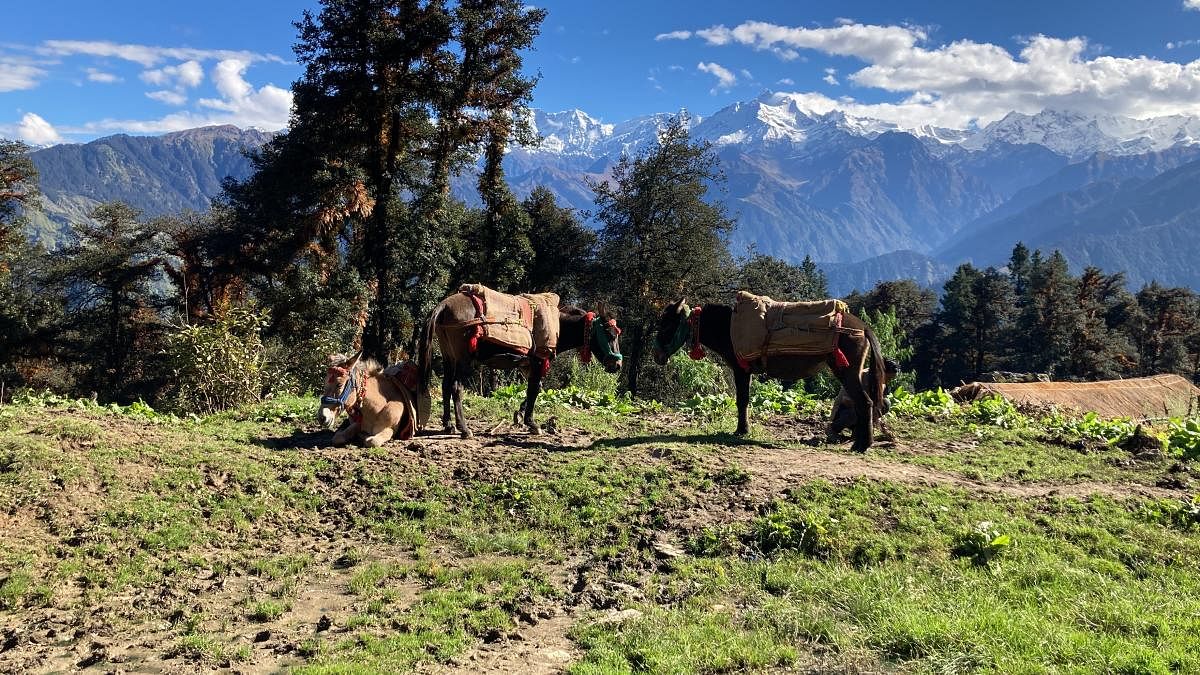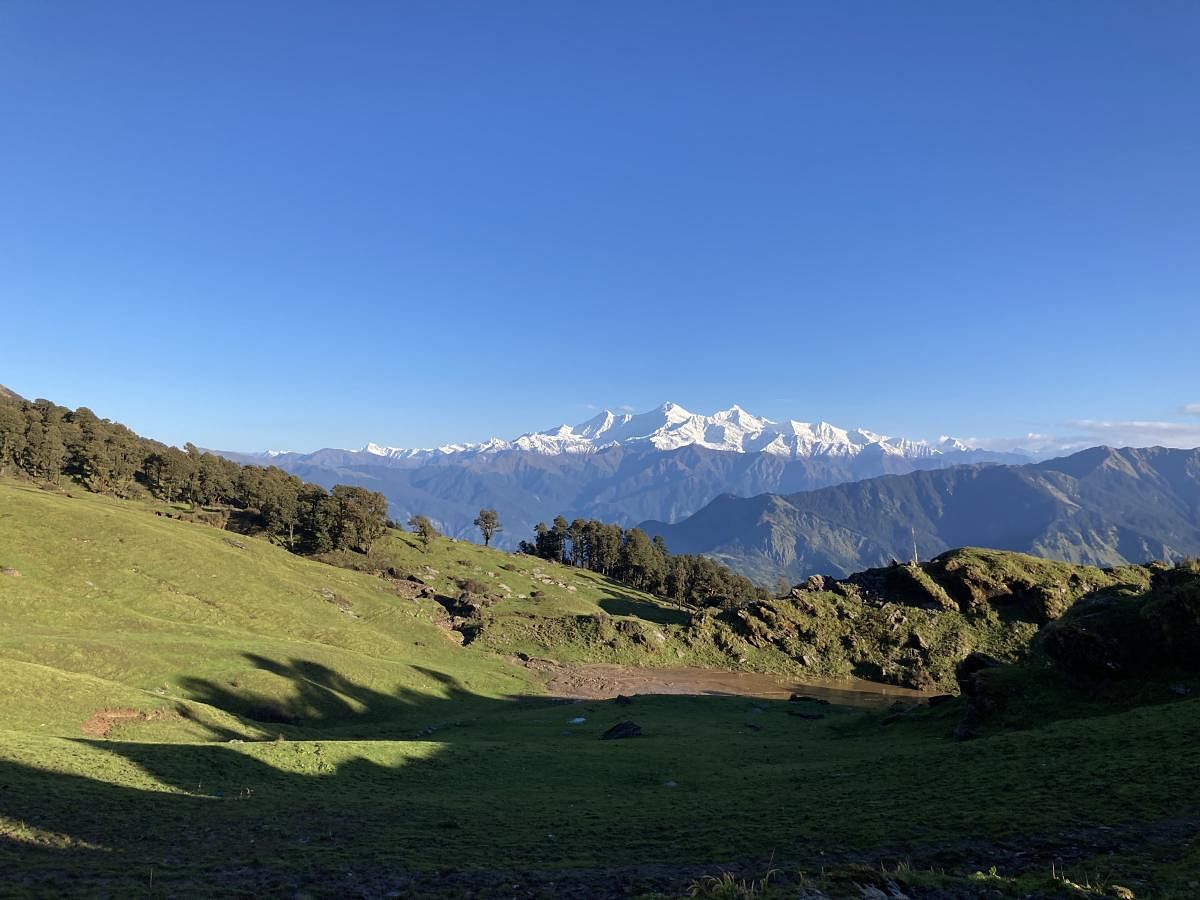

Uttarakhand is one of the most beautiful states for hiking in India’s Garhwali Himalayas. Along with three others, I set out on a five-day journey to Kush Kalyan, a breathtaking meadow, or bugyal as the Garhwalis call it, located high in the Himalayas.
After arriving at Dehradun Airport, we took a taxi to Uttarkashi, where we stayed the night. From Uttarkashi, where our expedition began, we boarded a vehicle to Saura, where we set out on foot along the emerald-green Bhagirathi river, passing the Maneri dam. We were accompanied by climber and guide Anil Kumar Rawat from Uttarakhand. Ranbir, Vinod, Karan, and Dharmendra made up his crew of four, acting as cooks, helpers, and keeper of the mules. Rationed food supplies, an LPG cylinder, and some offloaded bags were all transported by three mules. These animals were under the care of Dharmendra, an accomplished shepherd and weather observer.
We hiked for three hours to get to Dogadda on the first day. We pitched our tent at a chaani, a kind of refuge for animals. Animals can relax in these stone or wooden shelters after grazing the hills. Additionally, we observed two mountain dogs bringing a sizeable herd of sheep up a hill. A rich Prussian blue sky soon replaced the setting sun. As our eyes grew accustomed to the pitch darkness of the night over the mountain, the stars gradually became apparent. Due to their intense brightness, the moon and stars created shadows on the earth. We were informed that we would have to trek uphill the following day because of the change in elevation.
The weather changed after five hours of hiking due to the rain, which made us feel cooler. We realised we must keep our walking pace constant when trekking. Regular sitting keeps the body in a “relaxed condition,” making it more difficult to get up and start walking. Belak, our next campground, was within reach. We took a few deep breaths to unwind before spending some time by the fire. After some hot soup, we rapidly adapted to the altitude and took in the surroundings. After the clouds had cleared, we could make out a distant white peak shining in amber tones. It was the stunning Bandarpunch-I mountain that resembles a monkey's tail. Next to it, we could see the spectacular Kalanag peak. The next day, we hiked from Belak to Chatroni Chaani through Jorai Bugyal, another lovely meadow along the way. As you cross the mountains, the entire landscape welcomes you with small gestures like an intense hug. The clouds followed us as we moved further into the mist.
After reaching a particular point at the ridge’s edge, we had to drop down a fairly steep slope to reach our campsite. There were tiny underground rivers all around, generating whispering noises, due to the brief downpour and the apparent porosity of the ground. We travelled across the same ridge the next day to reach Kush Kalyan, our final campsite. The edge of this vast meadow was cut through by a small watercourse. It appeared to be a protracted stretch of carpeted, vibrantly green terrain. Additionally, there is a tiny Hanuman temple in Kush Kalyan. The view of the cluster of peaks from this campsite is breathtaking at dawn, and seeing the sun’s rays depart from each peak at dusk is mesmerising. We also visited the quaint town of Bagori in the Harshil region after the climb.
A charming tiny town that gives you the impression that you have entered a genuine Miyazaki Studio Ghibli scenario. This town, which is surrounded by apple trees and little cottage enterprises, has an extremely tranquil feel to it. This is evidenced by the elegant grins on everyone’s faces, the large ancient wooden houses, and the immaculate architecture.
Travel light on a Himalayan trek
Light backpacks are necessary for trekking, and every beginner learns how to pack a backpack effectively by making mistakes on their first walk. Because we anticipated it would be frigid, we bought robust sleeping bags. It is essential to wear footwear with ankle support and waterproof protection because rain is a given in the Himalayan region all year long and the terrain is prone to turning rough. Trekking poles are helpful since they serve as an additional set of legs and aid in weight distribution when climbing steep inclines. In the Himalayas, there are no streetlights, so you’ll need a headlamp with a lot of brightness. Carry electrolytes in powder form as that can keep you energised and also prevent headaches.